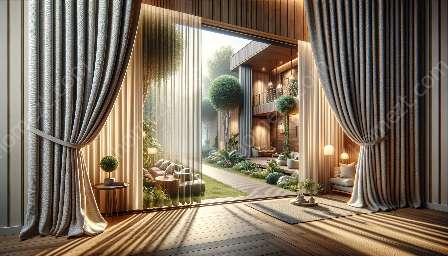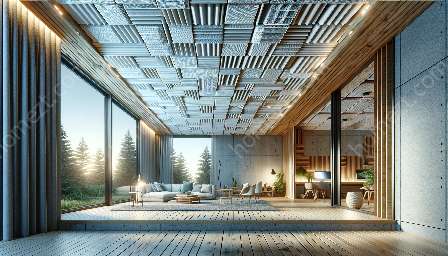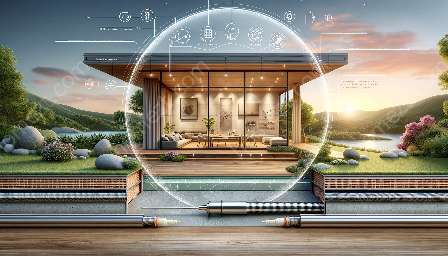Noise can be a significant nuisance in both urban and residential environments. Fortunately, advancements in technology have led to the development of powerful noise-canceling devices that can significantly reduce unwanted sounds. In this guide, we will explore the world of noise-canceling devices, how they work, and how they can be used to create a peaceful and quiet home environment. Additionally, we will delve into the various tools and equipment available for noise control in homes, providing practical tips and suggestions for effectively managing and minimizing noise pollution.
Understanding Noise Canceling Devices
Noise-canceling devices, also known as active noise control (ANC) devices, are designed to minimize or eliminate unwanted sounds by producing an anti-noise signal that is acoustically opposite to the intruding noise. These devices utilize sophisticated technology to analyze ambient sounds and generate sound waves that effectively neutralize or cancel out the disruptive noise.
Types of Noise Canceling Devices
There are several types of noise-canceling devices available, including:
- Headphones and Earbuds: Noise-canceling headphones and earbuds are popular for personal use, providing individuals with the ability to block out background noise in various settings, such as during travel, work, or leisure activities.
- Ambient Noise Cancelers: These devices are designed to reduce environmental noise in specific areas, such as open office spaces, conference rooms, or living areas.
- Car Audio Systems: Some vehicles are equipped with noise-canceling systems that mitigate road and engine noise, providing a more serene driving experience.
- Home Theater Systems: High-quality home theater systems often incorporate noise-canceling technology to enhance the audio experience by minimizing external disturbances.
Benefits of Noise Canceling Devices
Noise canceling devices offer a multitude of benefits, including:
- Improved Concentration: By reducing background noise, these devices can help individuals concentrate on work, study, or leisure activities with greater focus and productivity.
- Enhanced Comfort: Whether traveling, working, or relaxing at home, noise-canceling devices contribute to a more comfortable and peaceful environment, allowing users to enjoy their activities with reduced stress and distraction.
- Hearing Protection: Protecting one's hearing from prolonged exposure to high noise levels is crucial, and noise-canceling devices provide an effective barrier against potential damage caused by loud environments.
Tools and Equipment for Noise Control in Homes
In addition to noise-canceling devices, there are various tools and equipment designed specifically for managing and reducing noise within residential settings. These solutions cater to specific noise sources, such as household appliances, HVAC systems, and external disturbances.
Soundproofing Materials
Soundproofing materials, including acoustic panels, insulation, and soundproof curtains, are instrumental in minimizing external noise and preventing sound transmission within the home. These materials can be strategically installed to create quieter and more comfortable living spaces.
Noise Reduction Devices
Devices such as door sweeps, window seals, and draft excluders help to seal gaps and openings in doors and windows, effectively reducing the infiltration of external noise into the home.
White Noise Machines
White noise machines emit a consistent background sound, masking ambient noise and promoting a calm environment for relaxation and sleep.
Acoustic Furniture and Décor
Specialized furniture and decor items, such as sound-absorbing panels, acoustic wall coverings, and noise-reducing rugs, contribute to creating a peaceful and acoustically pleasant home environment.
Practical Tips for Noise Control in Homes
Incorporating noise control measures into the home setting can significantly enhance the overall quality of life. Here are some practical tips for effectively managing noise:
- Identify Noise Sources: Conduct a thorough assessment to identify the primary sources of noise within and around the home, allowing for targeted mitigation efforts.
- Strategic Furniture Arrangement: Positioning furniture and decor to absorb and diffuse sound can help minimize reverberation and echo, contributing to a quieter indoor environment.
- Maintain Equipment: Regular maintenance of household appliances, HVAC systems, and other machinery can reduce operational noise and prevent disruptive sounds.
- Outdoor Noise Control: Utilize landscaping features, such as trees, hedges, and sound barriers, to mitigate external noise from traffic, neighbors, or urban surroundings.
- Professional Consultation: Engage with professionals in the field of architectural acoustics and noise control to gain tailored insights and recommendations for noise reduction strategies.
Conclusion
In conclusion, noise-canceling devices and tools for noise control play a vital role in creating tranquil and harmonious living spaces. By leveraging the latest advancements in noise control technology and utilizing purpose-designed equipment, individuals can effectively mitigate disruptive sound and enjoy the benefits of a peaceful home environment. Whether through the use of noise-canceling headphones, soundproofing materials, or strategic noise management techniques, implementing these solutions fosters a more serene and enjoyable living experience.




















